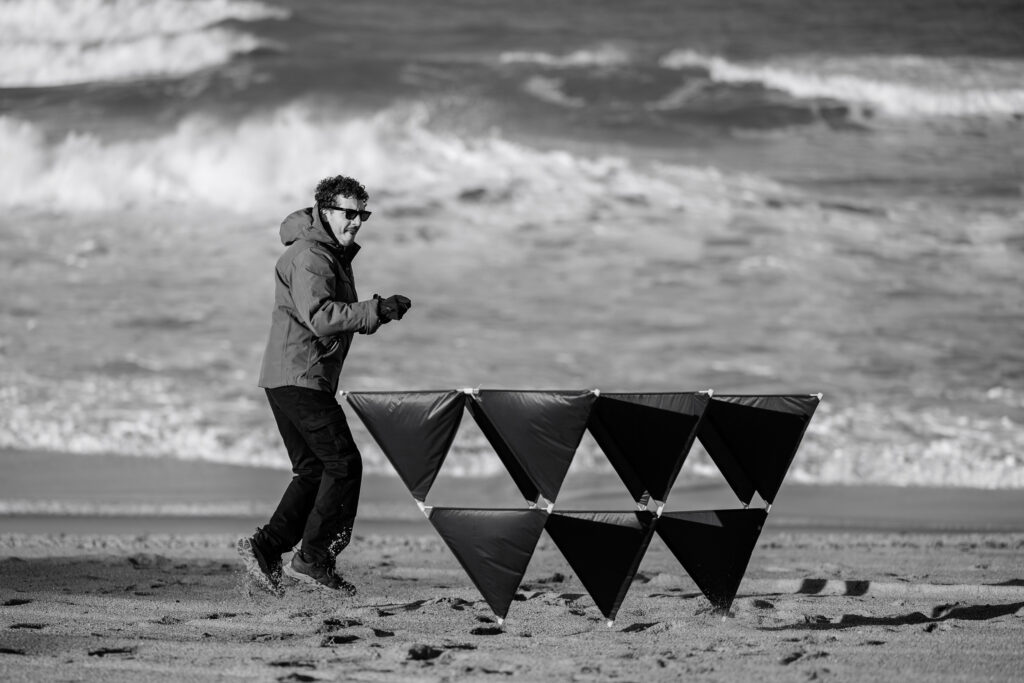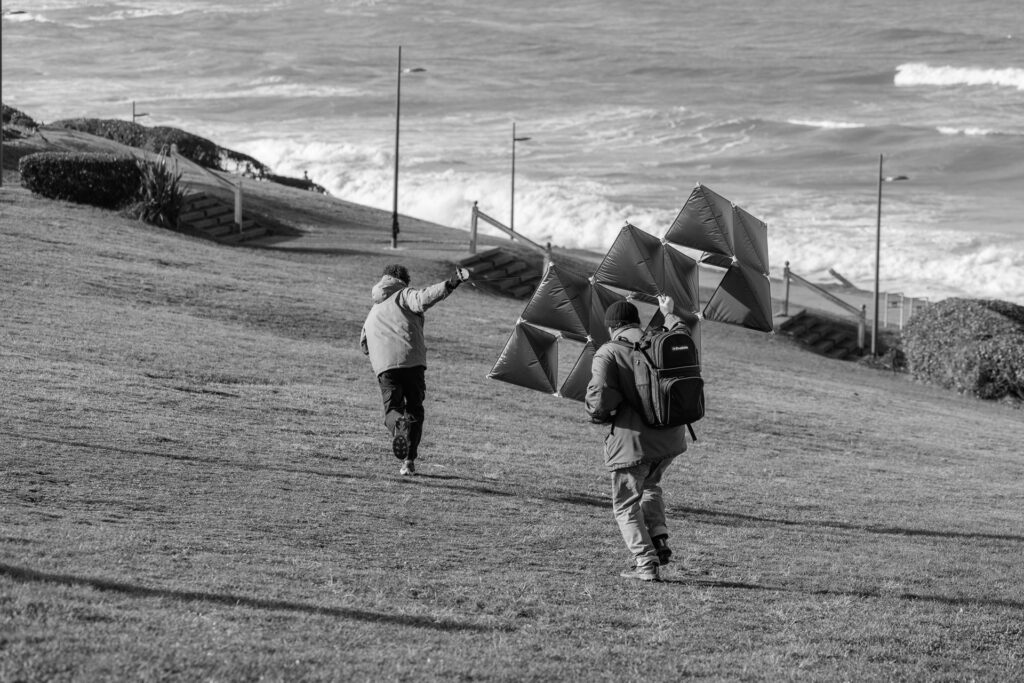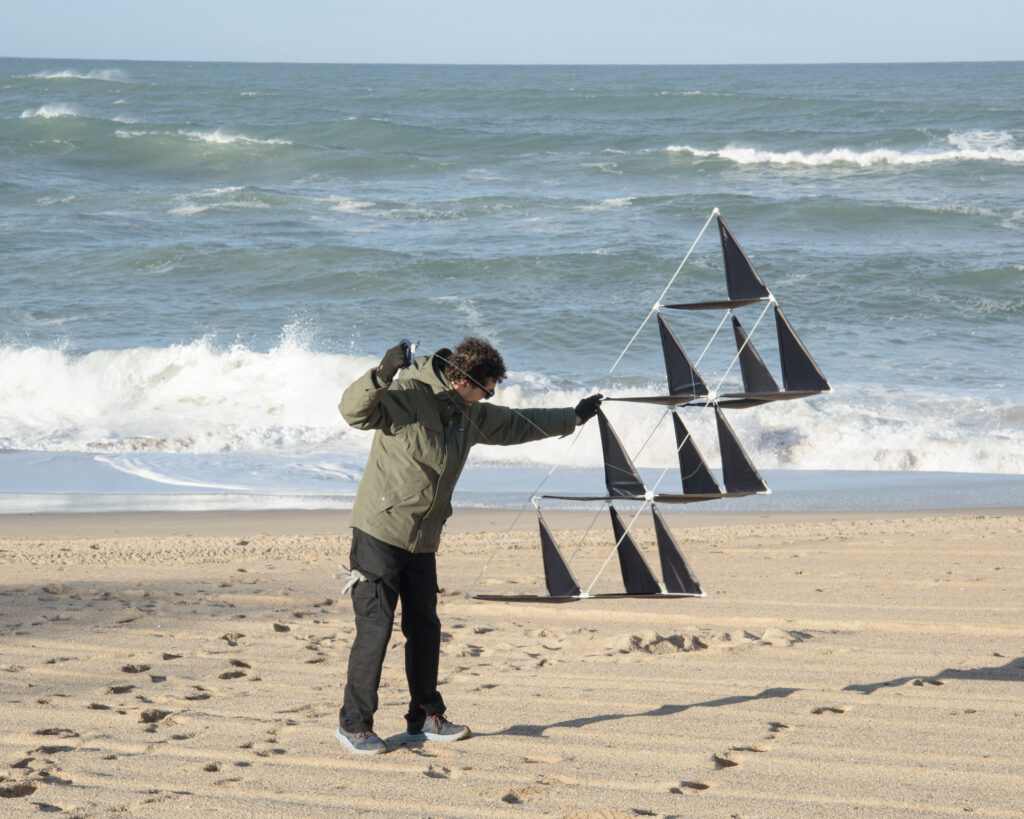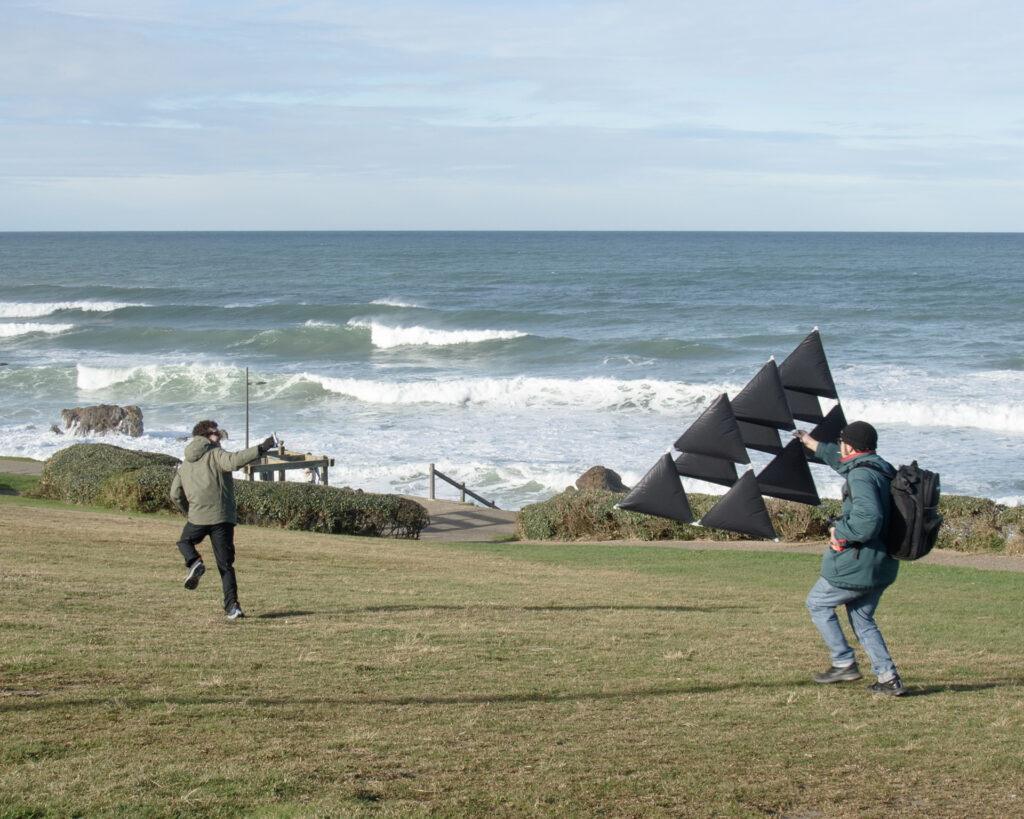Within REACH’s open framework of experimentation, this project emerged as a subtle provocation—poetic in form, elusive in intent. Object began to detach [+++] is more than a photographic project or installation—it’s a fragment of a larger narrative still unfolding. What appears at first glance to be a sculptural intervention or a performative gesture is, in fact, a literary device: a bric from a novel-in-progress, suspended in visual form.
This interview traces the conceptual and technical underpinnings of Marco’s work, revealing a delicate tension between design precision and performative vulnerability. It’s a conversation about weightlessness, resistance, and the privilege of creating without necessity.
Object began to detach [+++]—the title alone evokes a sense of rupture or transformation. What was the initial impulse behind this work?
Marco: The full title I originally chose was “Objects began to detach from the ground and ascend in a sinister, yet seemingly predictable pattern.” I actually wrote an entire short paragraph I wanted to use as the title, but for the prints we had to trim it down. That said, the intervention isn’t just an object, a performance, or a photo. It’s a brick in a short novel that’s still being written.
Editorial: The photograph feels like it’s caught mid-transition, as if something is slipping away from its original context. Was this idea of detachment something you experienced personally during the residency?
Marco: The notion of detachment clearly refers to the lifting of the “flying object.” I’ve always been drawn to the contrast between lightness and scale, and I was fully aware that making this kite actually fly on the beach was close to impossible. But that impossibility—that poetic tension—is exactly what I wanted to evoke. I’m quite happy with how it turned out.
Editorial: There’s a haunting stillness in the image, yet it doesn’t feel passive. It’s almost as if the object is resisting its own disappearance. How did you approach the composition and framing to convey that tension?
Marco: This was the technical part I prepared before the residency. The structure uses kite-grade materials and 3D-printed connectors. I hand-sewed all the sails myself. Despite its hyper-geometric shape, the object seems to have a life of its own. It’s unstable, unpredictable. Yet I could lift it with one hand.
Editorial: Residencies often act as incubators for experimentation. Did this piece mark a departure from your previous work, or does it extend a thread you’ve been following?
Marco: The Biarritz residency was a rare opportunity to experiment with what I consider a privilege: the absence of necessity. I had total freedom to contribute anything, so I leaned into something that’s clearly part of my aesthetic language, but added a performative aspect that was entirely new to me. I consider myself a designer—and a nerd, first and foremost. Performance and live action are far from my usual practice. But that’s exactly the kind of feeling I wanted to explore.






![Object began to detach [+++]](https://amplify-project.xyz/wp-content/uploads/2025/08/biarritz-29.jpg)